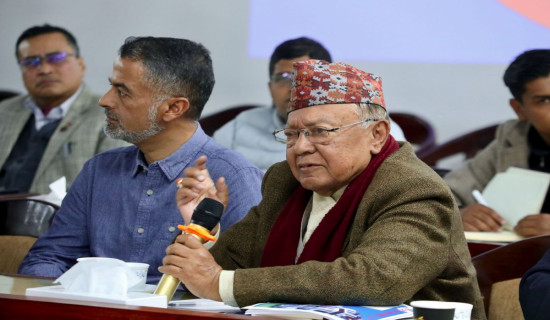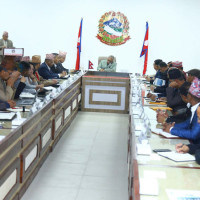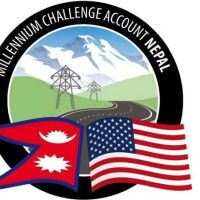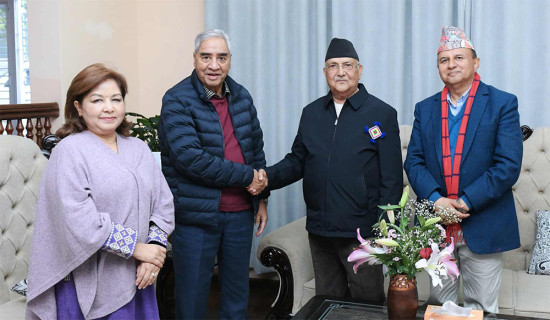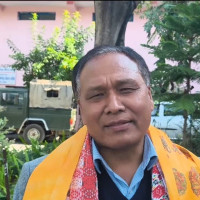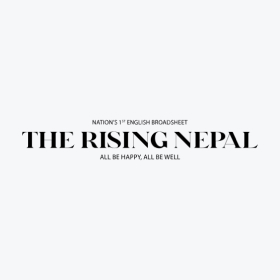- Monday, 22 December 2025
Expectations From Constitution Amendment
The Constitution Day marks a momentous leap from the dark shadow of autocracy to the dawn of inclusive democracy. This day, evokes a mixed feeling of celebration for the triumph of the popular will of the people and commemoration of the half-century of struggle and sacrifice of the people for freedom, democracy, inclusion, and human rights.
The ritual of constitution celebration was observed even during the period of monarchy, but back then, it was only a hollow formality. The constitution in place then was not created by the people, nor did it ensure the freedom of the people, inclusive democracy, justice, equality, and human rights. Unsurprisingly, the people did not accept it and continued their fight for replacing the king's constitution with the one written by their own representatives.
This current constitution was proclaimed on 20 September 2015, marking the culmination of the turbulent transition following the decade-long Maoist insurgency lasting from 1996 to 2006 and the abolition of monarchy. This reshaped Nepal's political structure to a federal, democratic republic. The constitution-making process took seven years, delayed by political disagreement on the issues of federalism, ethnic representation, and governance. The Constituent Assembly elections had to be held twice as the first Constituent Assembly expired without reaching a consensus on a draft. The Second Constituent Assembly picked up where the first assembly had left off, finally completing the constitution for promulgation.
The proclamation of the constitution has marked the beginning of a new era of federal democratic republic. Nepal has been declared a secular state and has been reorganised into seven provincial states and 753 rural and urban municipalities. Mechanisms are being developed for delegation of power to and sharing resources with the local governments. Efforts are also underway to address discontent on minority representation and to provide wider autonomy to the local bodies.
It is indisputably clear that the successful promulgation of the constitution was a major milestone in the history of Nepal's transition. However, the post transition journey to stability has not been smooth sailing. There are ongoing dissatisfactions, discontents, and disagreements on a number of constitutional provisions. Issues persist on representation of indigenous people, Dalits, women, differently abled people, and the LGBTQ+ community. Additionally, the Madhesi community is also calling for redress on the issue of demarcation of provincial borders and representation of marginalised communities of the Madhes.
The persistent political instability during the last nine years following the constitution's proclamation has raised serious questions on the effectiveness of the electoral system outlined in the 1915 constitution. During this period, seven different governments have been formed, which has seriously affected consistency in policymaking, budget disbursement, employment generation, and the completion of development infrastructure. In the context, a serious public discourse is going on criticising the existing constitutional arrangements and calling for reform on the provisions for formation and dissolution of government through a constitutional amendment.
The question of amendment of the constitution has been dominating public discourse ever since the current constitution was proclaimed in 2015 reflecting aspirations of various constituencies. Most significant of which concern federal restructuring, citizenship, secularism, and electoral reform. With the formation of a coalition government consisting of two largest political parties, the Nepali Congress and the CPN (UML), the question of amendment of the constitution has taken central stage.
When the current coalition government was formed, the Nepali Congress and CPN (UML) cited the need for the amendment of the constitution as a key rationale for the alliance of the two largest parties in the parliament. In normal circumstances, the formation of such a coalition would be against the parliamentary system, though there are historical precedents for such a coalition. For instance, in China, the Communist Party of China and the ruling party, the Kuomintang, had formed a coalition government from 1937 to 1949 for a common cause of fighting against the Japanese. During the constitution-making process, the Nepali Congress, the CPN (UML), and the CPN (Maoist) had also collaborated through a coalition government with the shared goal of writing a new constitution.
A constitution is the most stable and enduring legal framework of a sovereign state. But it is not a line in stone. When state sovereignty is at stake or the people's aspirations override, the constitution should and can be changed. However, the visible deficiencies that hinder the political process must be brought to public attention, and a robust public debate should be encouraged so that consensus can be built on the issues and scope of amendment. A constitutional amendment requires a two-thirds majority, which justifies the formation of a coalition government comprising two of the largest political parties. But this coalition is not at liberty to grant its parliament members an unchecked power to alter constitutional provisions at will.
The promise of constitutional amendment offered by the ruling coalition has resonated with the public, as different sectors of society were already calling for changes in the constitution. But the different groups of Nepali society may have embraced the idea of reform for diverse reasons. Ethnic and indigenous communities are expecting re-demarcation of provincial borders on the basis of homogeneity of population and similarity of geography. Nepalis who are married with foreign women want a smoother path to naturalisation of citizenship for their spouses. Single mothers want easier legal provisions for passing citizenship to their children. Additionally, there are also strong demands for streamlining federal structures to make them more efficient and economical. Some even go so far as abolishing federalism itself.
Of all these issues, the amendment of the electoral process appears most urgent. The current electoral system is at the core of never-ending instability in the country. The mixed system of proportional and direct election, together with the complex inclusion requirements, has made it nearly impossible for any party to form a single party majority government after an election. If this system remains intact, Nepal risks being trapped in an endless cycle of political instability, dragging the country's economy to rock bottom and shattering the dreams of the people for stability, prosperity, and peace.
(Dr. Bharadwaj is a former ambassador and former chairperson of Gorkhapatra Corporation.)



